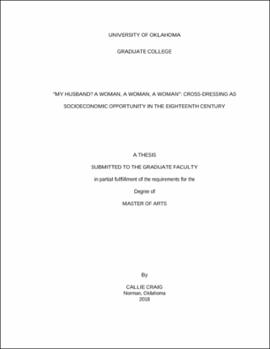| dc.description.abstract | During the evolutionary period that is the eighteenth century, constructing and differentiating between genders was contentious, as was establishing tenants of masculinity and femininity. Because of the era’s interlocking social and cultural components, eighteenth-century women viewed gender and sexuality as inextricable from their socioeconomic status. Eighteenth-century scholarship tends to overlook the intersectional motivations driving cross-dressed women. This thesis acknowledges cross-dressed women as enacting and performing the self, masculinity, gender, and sexuality; however, by analyzing Mary Hamilton as depicted in Henry Fielding’s The Female Husband and Charlotte Charke as depicted in her A Narrative of The Life of Mrs. Charlotte Charke, I maintain the aforementioned types of performance are fringe benefits of cross-dressed women’s primary motivation: socioeconomic mobility. By cross-dressing, Hamilton and Charke challenge established eighteenth-century gender binaries by reconfiguring sexuality, masculinity, and femininity in order to improve their socioeconomic standing. | en_US |
